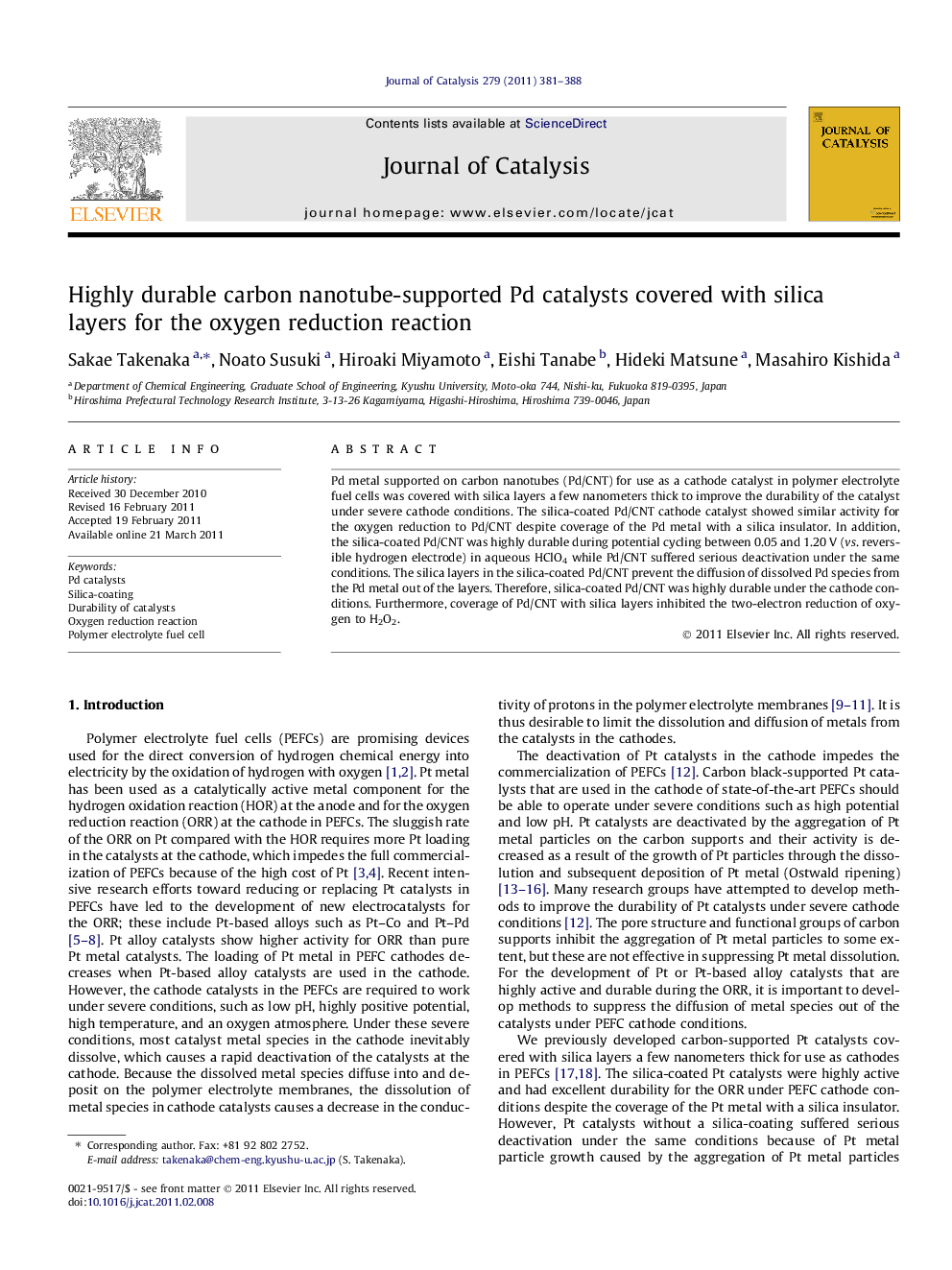| Article ID | Journal | Published Year | Pages | File Type |
|---|---|---|---|---|
| 61828 | Journal of Catalysis | 2011 | 8 Pages |
Pd metal supported on carbon nanotubes (Pd/CNT) for use as a cathode catalyst in polymer electrolyte fuel cells was covered with silica layers a few nanometers thick to improve the durability of the catalyst under severe cathode conditions. The silica-coated Pd/CNT cathode catalyst showed similar activity for the oxygen reduction to Pd/CNT despite coverage of the Pd metal with a silica insulator. In addition, the silica-coated Pd/CNT was highly durable during potential cycling between 0.05 and 1.20 V (vs. reversible hydrogen electrode) in aqueous HClO4 while Pd/CNT suffered serious deactivation under the same conditions. The silica layers in the silica-coated Pd/CNT prevent the diffusion of dissolved Pd species from the Pd metal out of the layers. Therefore, silica-coated Pd/CNT was highly durable under the cathode conditions. Furthermore, coverage of Pd/CNT with silica layers inhibited the two-electron reduction of oxygen to H2O2.
Graphical abstractCarbon nanotube (CNT)-supported Pd metal catalysts covered with silica layers show improved durability for oxygen reduction in polymer-electrolyte fuel cells.Figure optionsDownload full-size imageDownload high-quality image (204 K)Download as PowerPoint slideHighlights► Coverage of carbon nanotube-supported Pd metal with silica layers (SiO2/Pd/CNT). ► SiO2/Pd/CNT for oxygen reduction in fuel cells. ► Coverage of Pd/CNT with silica prevents deactivation of Pd under cathode conditions. ► Coverage of Pd/CNT with silica inhibits the formation of H2O2 from O2. ► Silica-coating method is effective for development of non-Pt catalysts for PEFC.
